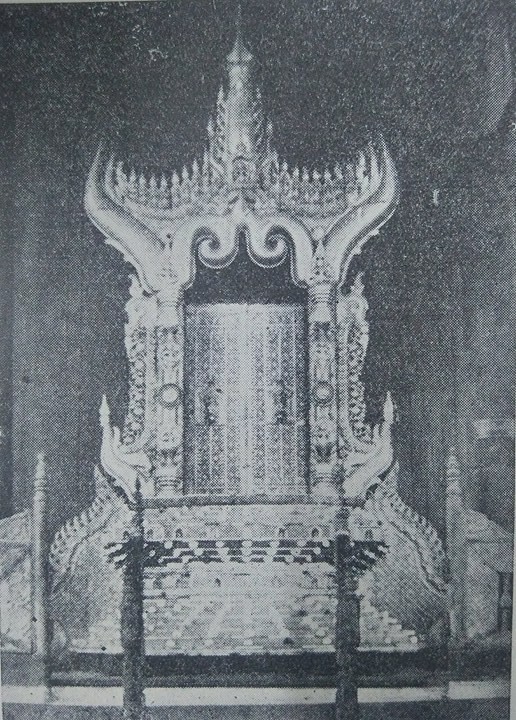On this day in 1948, Lord Mountbatten, the governor-general of India, returned the Thihathana Palin — the Lion Throne — to Myanmar’s first president, Sao Shwe Thaik. Mountbatten originally intended to return it on Jan.4, the day Myanmar gained independence from Britain. However, due to difficulties disassembling the giant chair, it could only be returned in March.
There were eight types of thrones in the royal court, of which the Lion Throne was the most important, representing sovereignty. The throne was placed in the royal assembly and used when the king received foreign envoys, accepted presents from vassals and issued royal decrees.

After the British moved the Myanmar royal family to Ratnagiri, India, on Nov. 29, 1885, General Harry Prendergast’s forces looted Mandalay Palace and took the Lion Throne there as well. The throne was then put on display at the India Museum in Kolkata in 1902. When Myanmar was on the verge of independence, Mountbatten discussed returning the throne with King Gorge. It finally made its way back to Myanmar on this day in 1948, after spending more than 50 years abroad.
Once back home, the throne was taken to the presidential residence on Ahlon Street in Yangon. Myanmar’s presidents used it to received international dignitaries including Yugoslav President Josip Broz Tito, Chinese Premier Zhou Enlai, Jawaharlal Nehru of India, Gamal Abdel Nasser of Egypt and U.S. Vice President Richard Nixon.
On September 12, 1959, the throne was moved to the National Museum in Yangon for public display and remains there to this day.
Translated from Burmese by Thet Ko Ko.

















